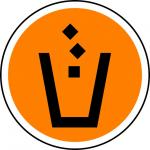
As of 28 December 2020, facilities generating wastes and performing waste management operations are required to comply with the revised set of waste management rules.
The Rules provide that organisations operating production facilities must collect and temporary store wastes they are generating. They are then required to remove these wastes themselves or contract an external waste management organisation that collects, transports and neutralises, landfills or recycles such wastes.
The Rules classify wastes into five classes:
- Class 1 – extremely hazardous;
- Class 2 – highly hazardous;
- Class 3 – moderately hazardous;
- Class 4 – lowly hazardous; and
- Class 5 – non-hazardous.
Facilities are allowed to accumulate and temporarily store wastes they are generating for a maximum period of 6 months, after which they must transfer these wastes to third parties for disposal or recycling.
Liquid and gaseous wastes must be stored in hermetic containers.
Class 1 production wastes must be stored in sealed containers (steel drums, containers). After a container has been filled, it must be closed with a steel lid, and, if necessary, welded with electric gas welding. These containers must be labelled with labels that indicate all hazardous properties of the wastes placed inside of them.
Facilities are required to designate special areas for temporary waste storage and ensure that all wastes stored in such areas are protected from rain, snow and wind.
Law: On approval of the Sanitary Rules "Sanitary and Epidemiological Requirements for the Collection, Use, Application, Decontamination, Transportation, Storage and Landfill of Production and Consumption Waste", Order of Acting Of the Minister of Health of the Republic of Kazakhstan dated December 25, 2020 No. ҚР DSM-331/2020





